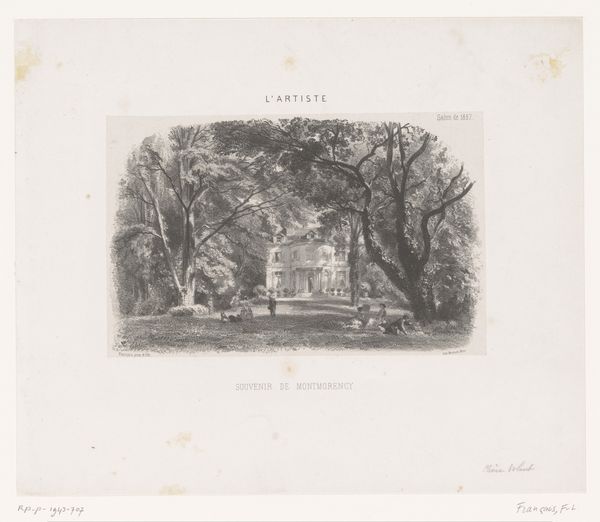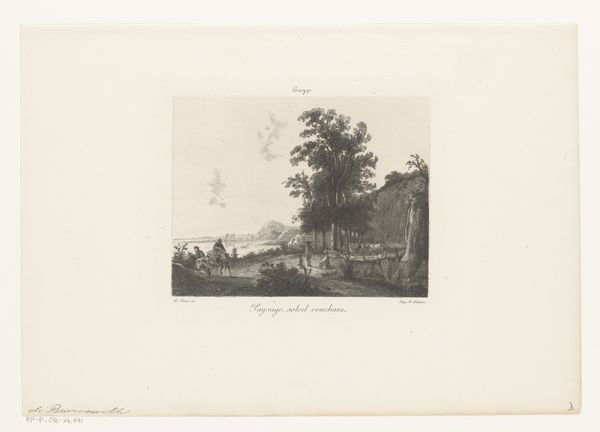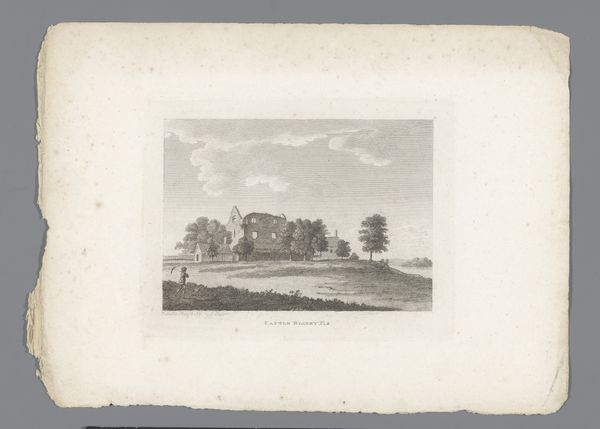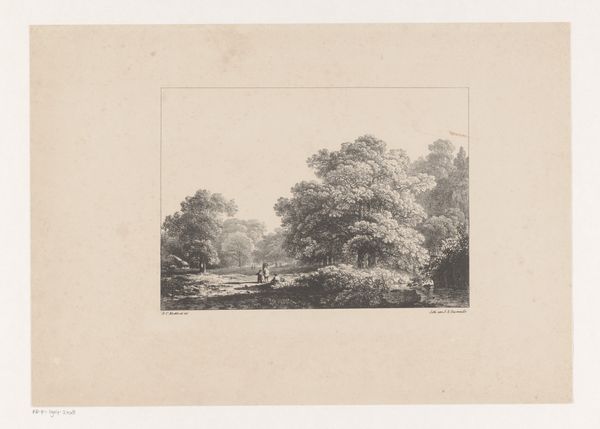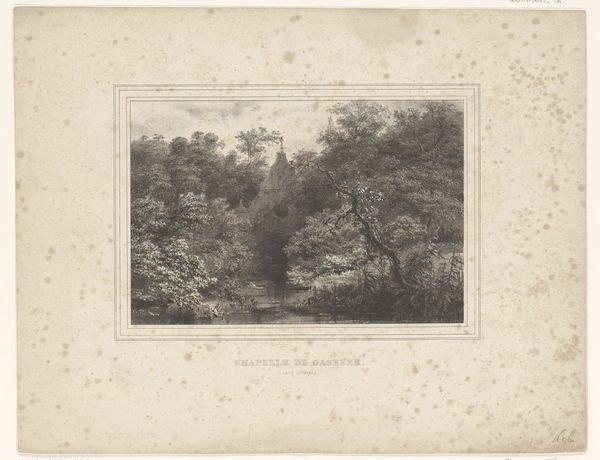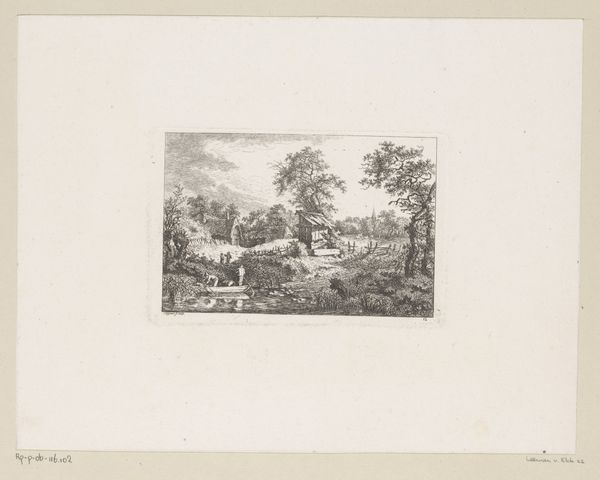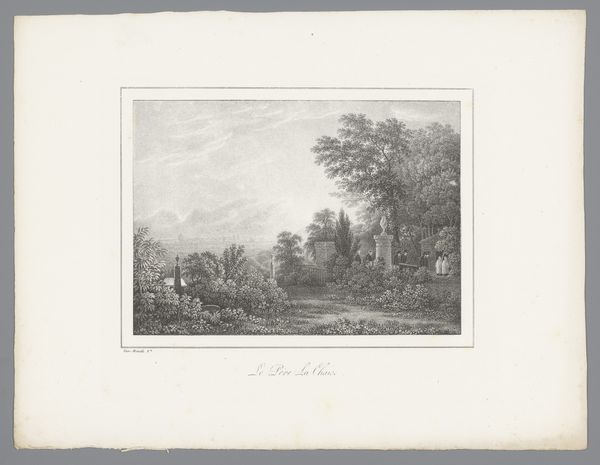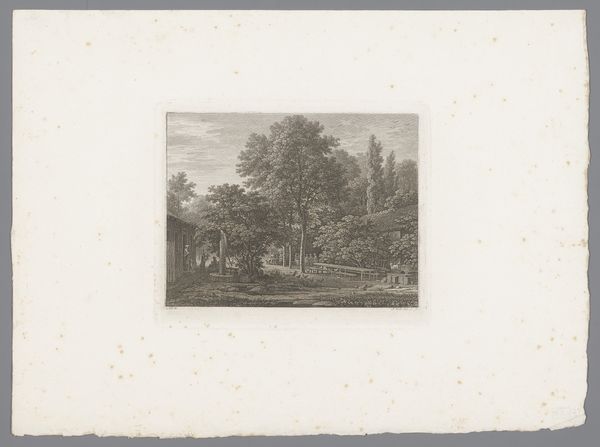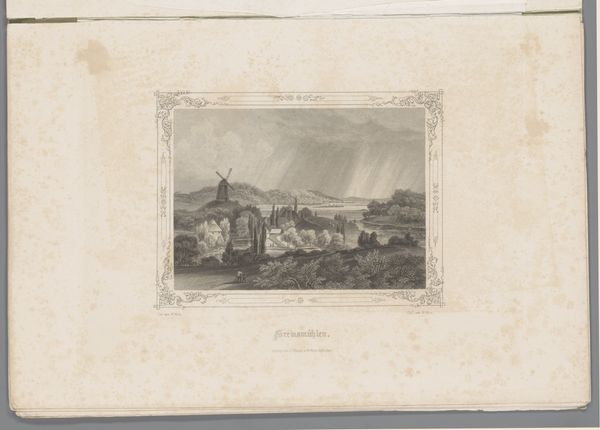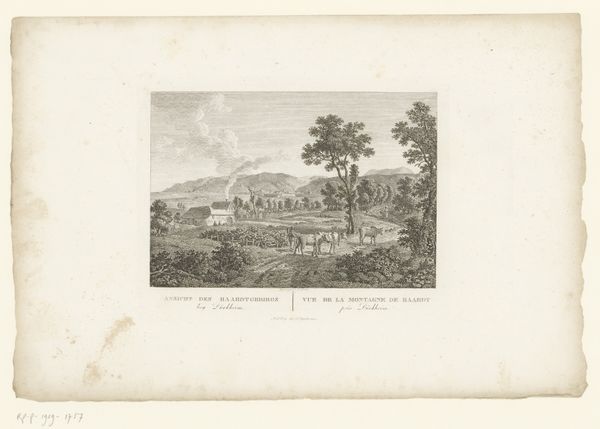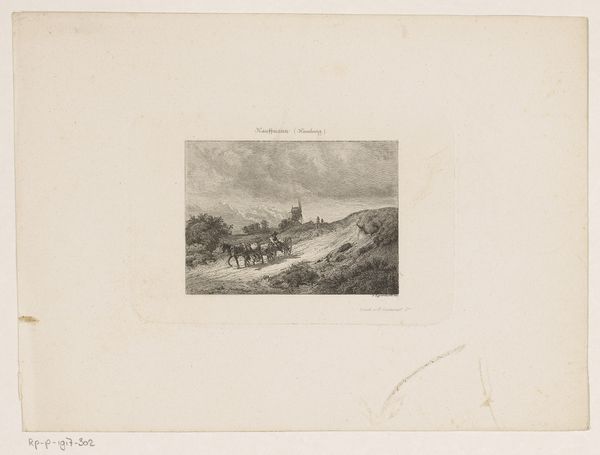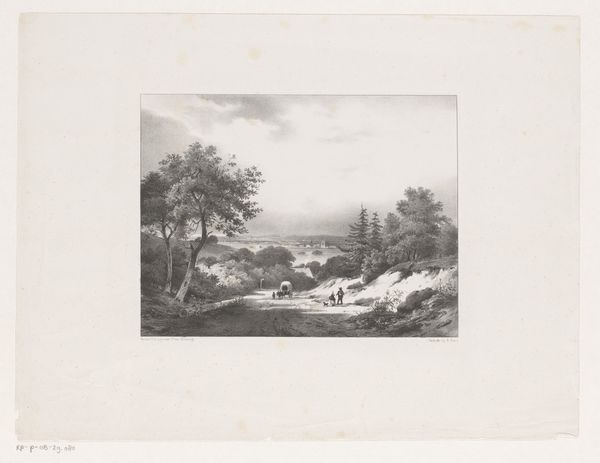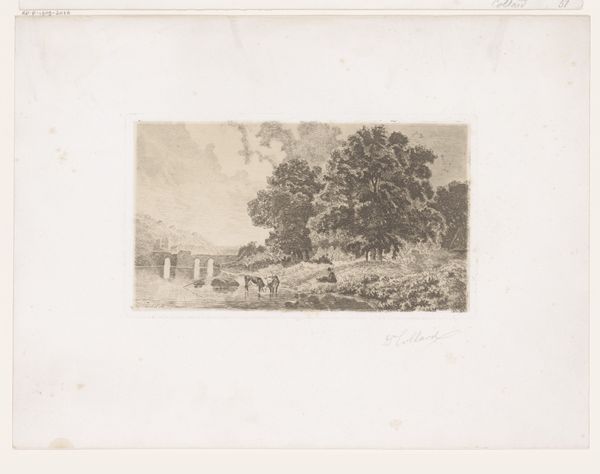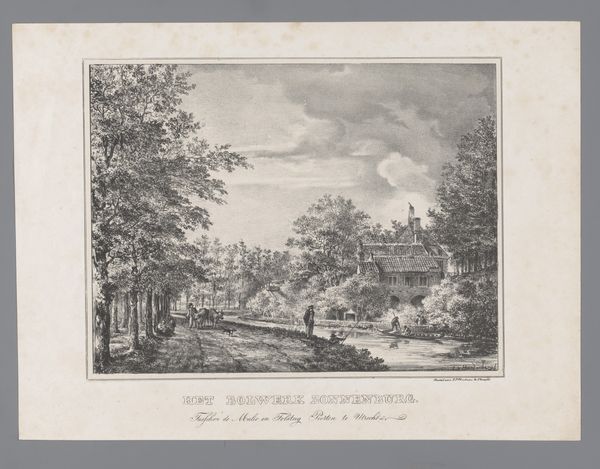
print, etching, engraving
# print
#
etching
#
landscape
#
romanticism
#
cityscape
#
engraving
Dimensions: height 193 mm, width 142 mm
Copyright: Rijks Museum: Open Domain
Curator: Editor: So, this is "Gezicht op het herenhuis Gut Knoop nabij Kiel," an 1847 etching and engraving by Georg Michael Kurz. The overall feeling is so serene. It is meticulously rendered, which I appreciate. I'm curious about your take on this work? What's most interesting to you? Curator: I see an image deeply rooted in the means of production. Kurz, the artist, chose printmaking, a medium inherently tied to reproducibility and accessibility, rather than the singular 'aura' of a painting. The meticulous labor involved in etching and engraving—the physical act of incising lines into the plate— speaks volumes. Do you notice the deliberate detail and craft involved? Editor: Absolutely! The precision in creating this serene landscape through those intricate lines. How does this detailed approach connect with the societal context of the time? Curator: Precisely! The 1840s in Europe were marked by burgeoning industrialization, creating a tension between agrarian life and new forms of production. Images like these, circulated as prints, romanticize the pastoral lifestyle – the manor house becomes a site of leisurely consumption, viewed perhaps, as a reprieve from increasingly urban and industrial landscapes. Notice how labor, like boating or strolling is neatly incorporated into the picturesque scene? It's carefully staged labor, almost. Editor: So it’s almost presenting a curated image of an ideal life in the face of industrial change? It really makes you consider the act of viewing itself. Curator: Exactly. Kurz uses materials and production methods to offer an idealized, consumable version of the landscape – a luxury object in itself. The means of production – engraving and etching – make this ideal accessible to a wider, consuming public, while also reminding them of a perceived simpler past. Editor: That's fascinating, reframing it as a commentary on production and consumption really deepens the experience of viewing. Curator: Yes, and think about the circulation of these images as commodities. These prints weren't just art; they were part of a developing visual culture, shaping perceptions and desires through mass production. How do you think the contemporary viewer would relate to such an image today? Editor: It makes me wonder about what ideals are being peddled through our own readily available art forms and methods today! Thank you.
Comments
No comments
Be the first to comment and join the conversation on the ultimate creative platform.
